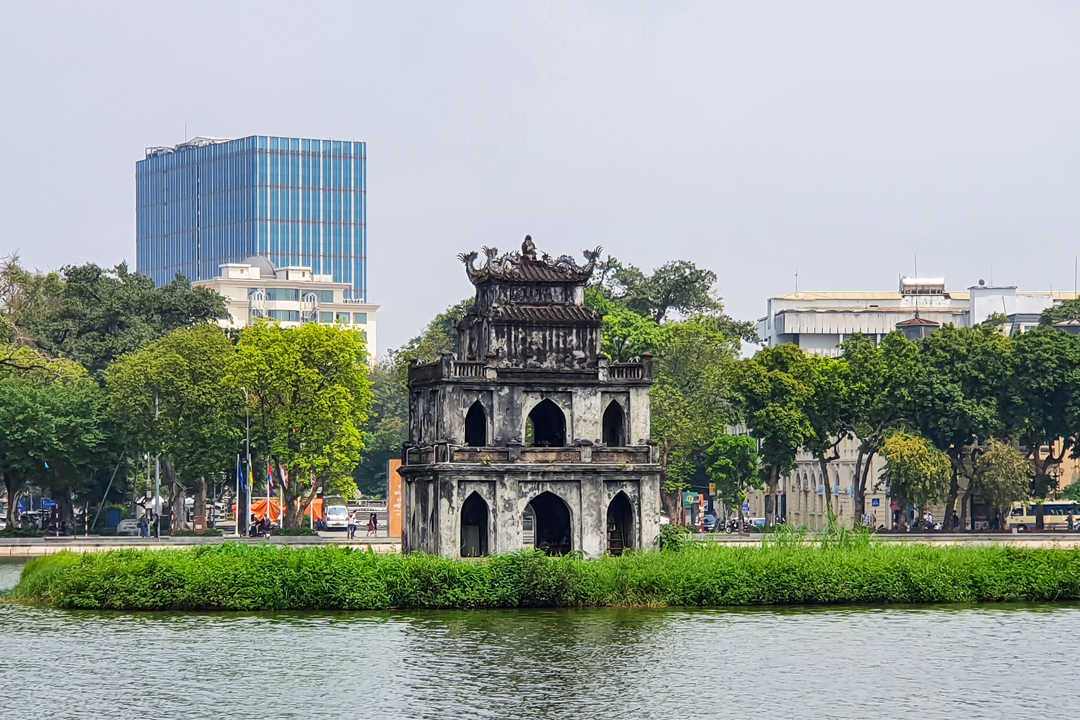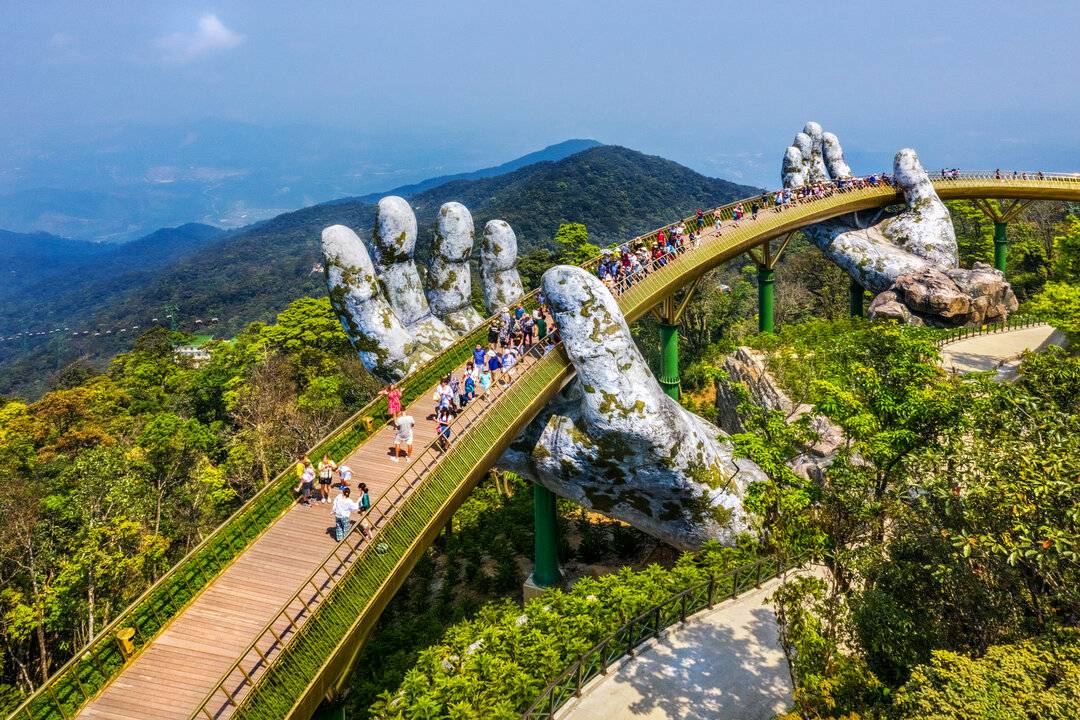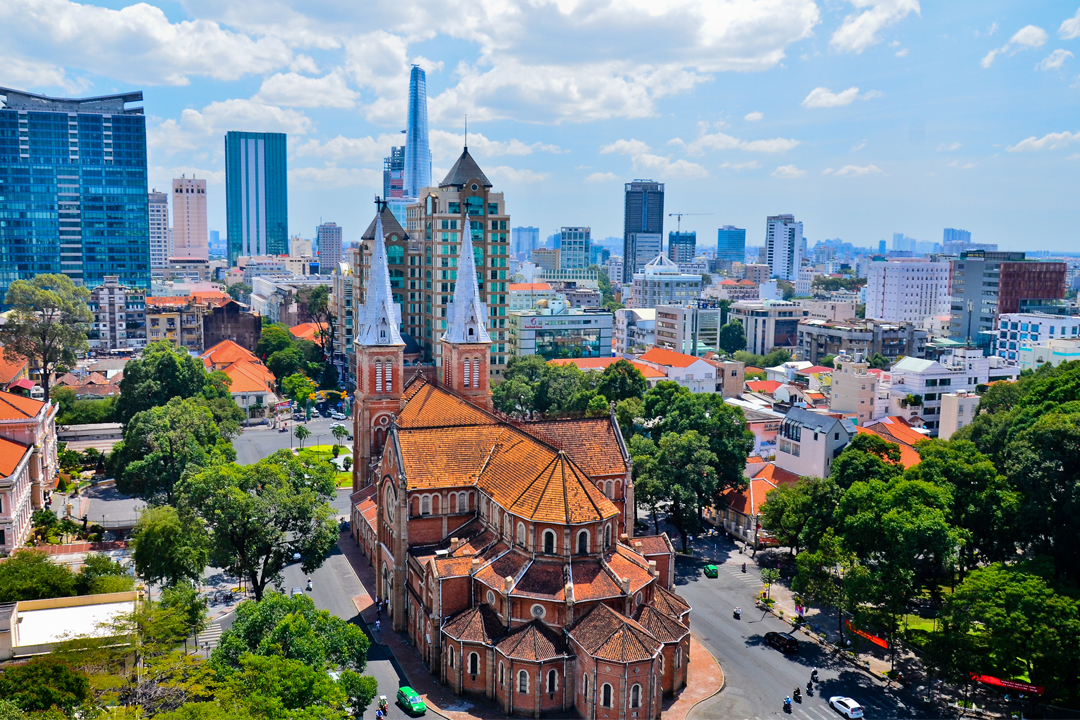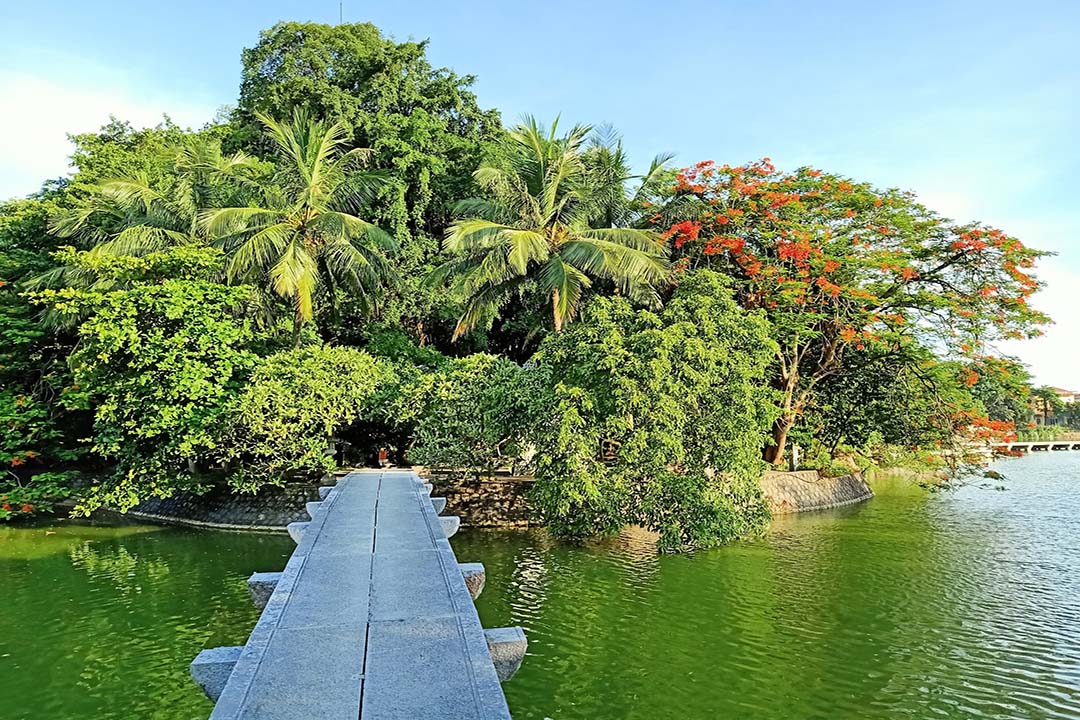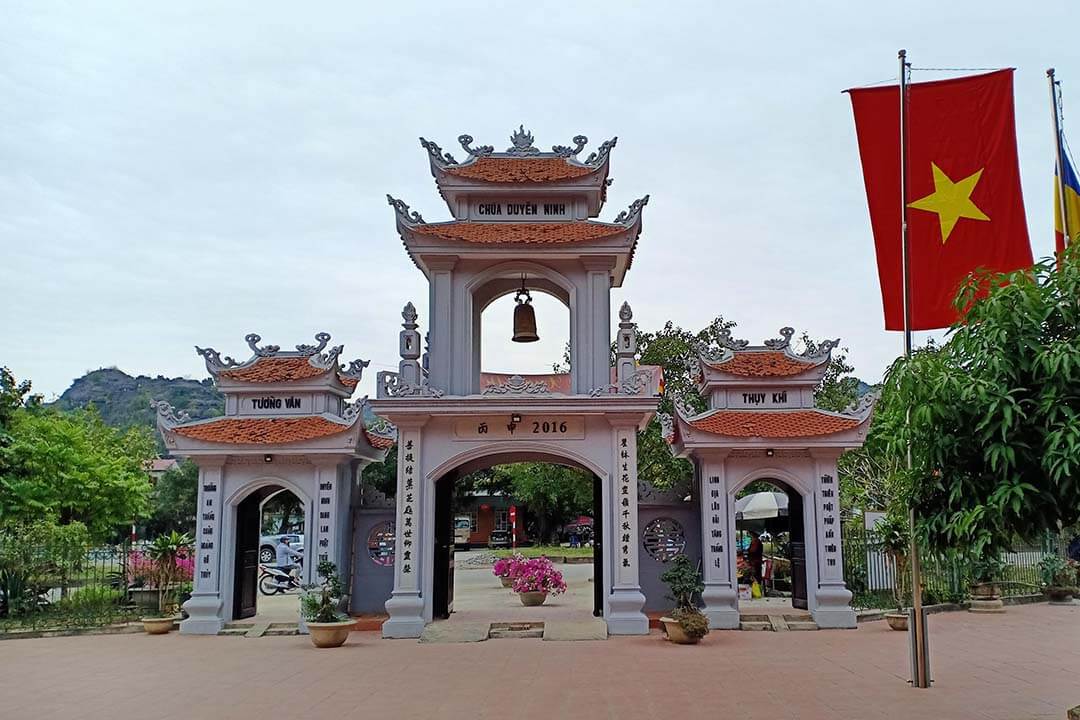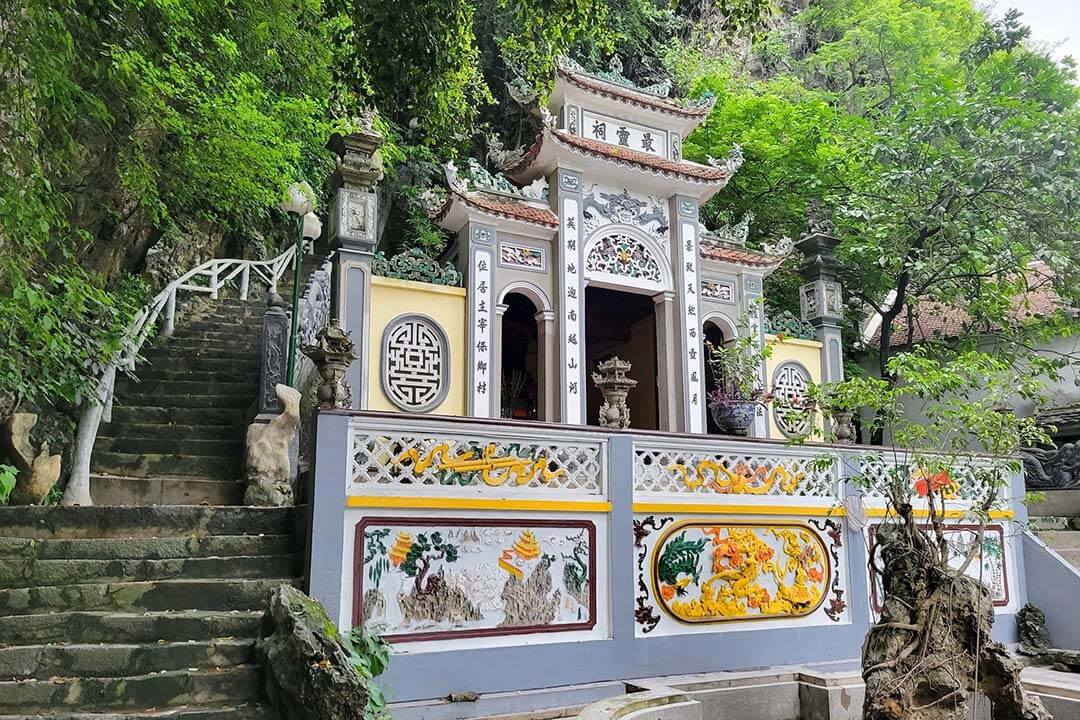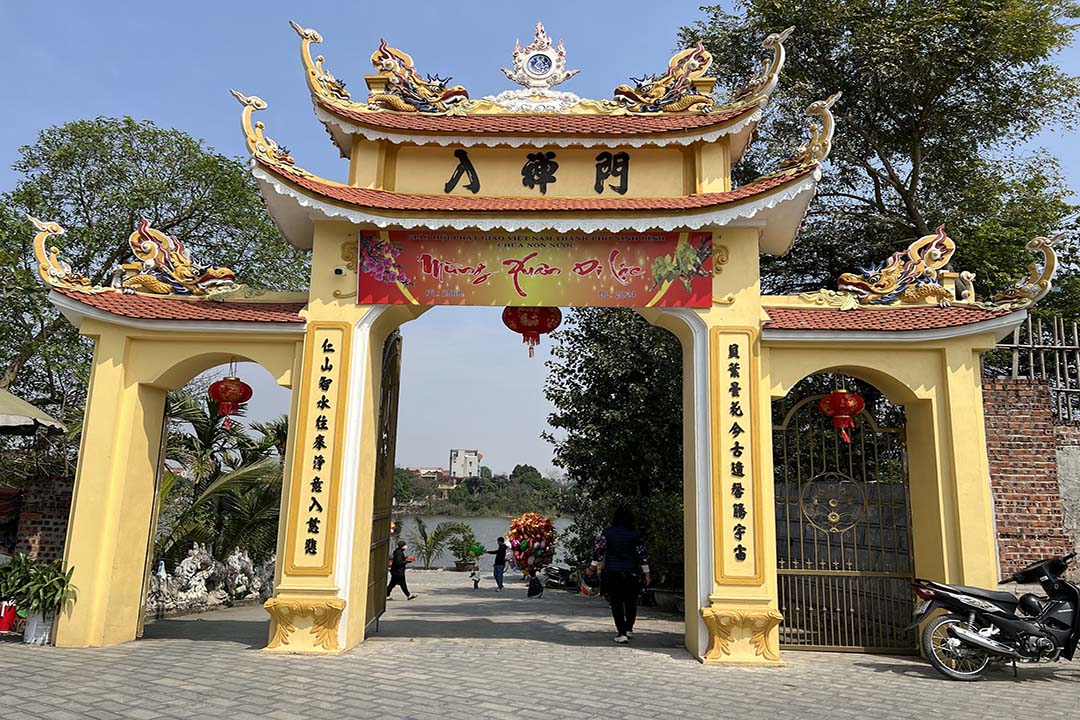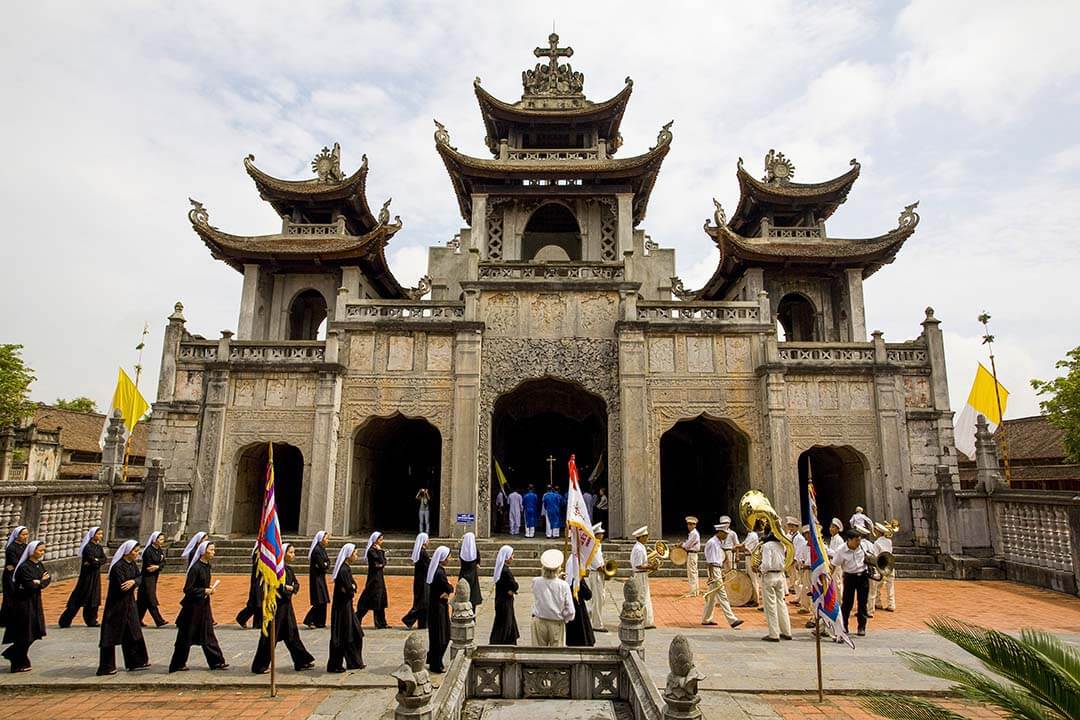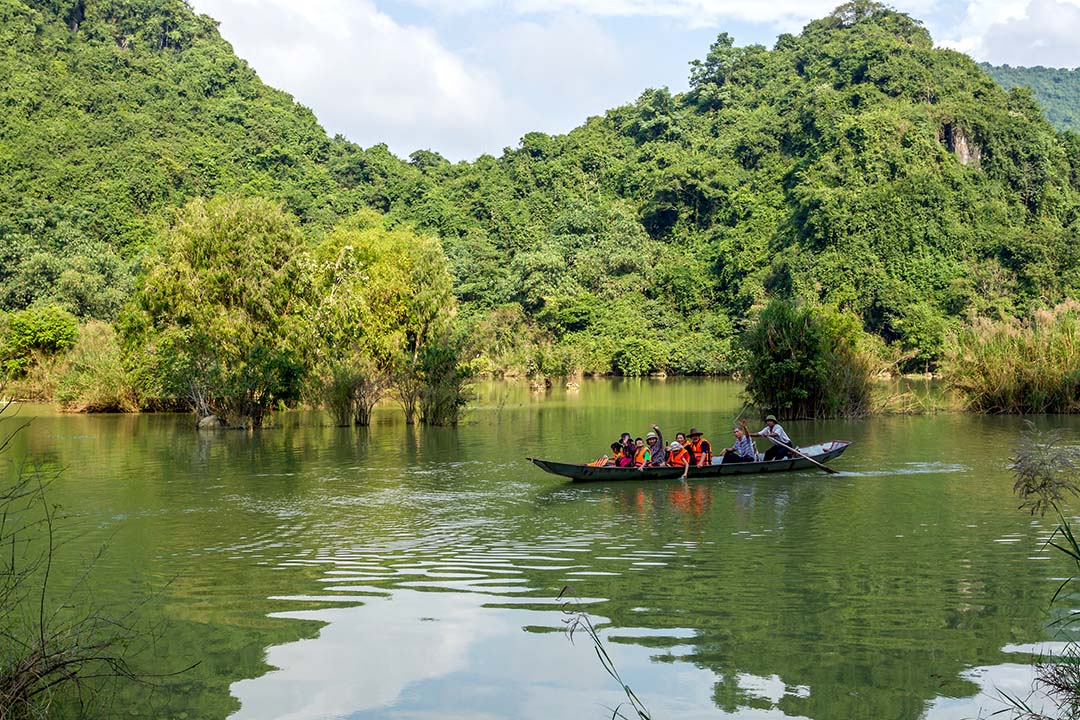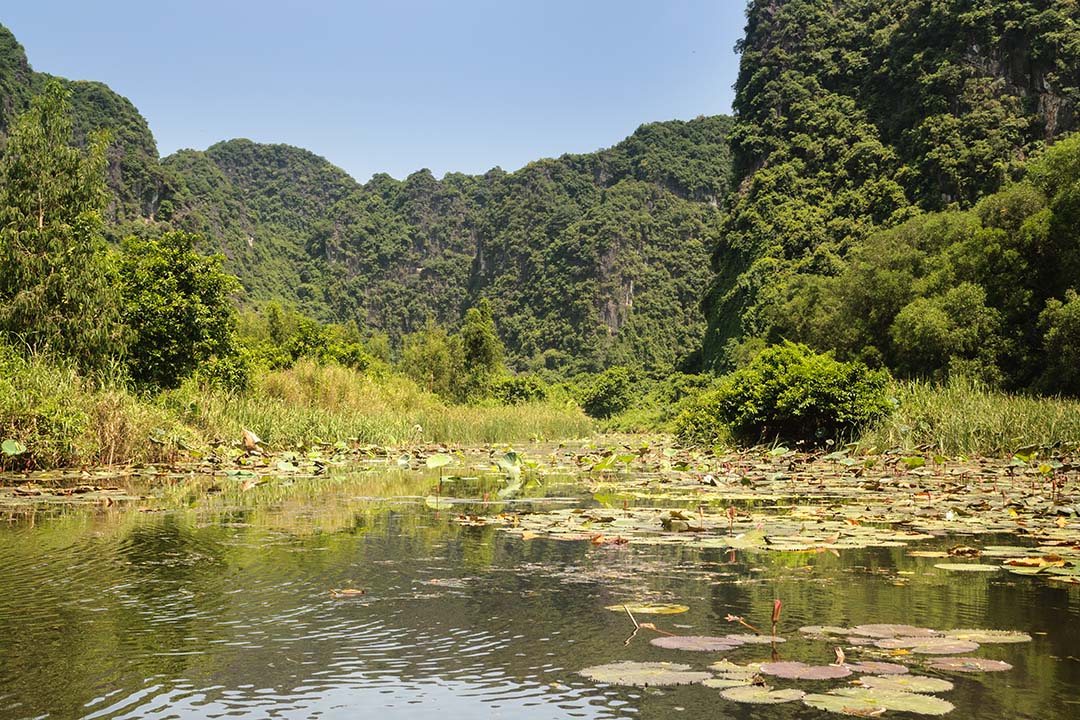Sep - 17 - 2025
Cuc Phuong National Park was established in 1962 as Vietnam’s first national park. It covers an area of 22,408 hectares, making it one of the largest protected areas in Vietnam. Located in the provinces of Ninh Binh, Thanh Hoa, and Phu Tho (former Hoa Binh), it sits in the heart of northern Vietnam. It lies within Vietnam’s Red River Delta and the northern Annamite Range.
The park is home to over 2,000 species of plants, as well as a rich assortment of mammals, birds, reptiles, and amphibians. Beyond its natural wonders, Cuc Phuong also holds significant cultural value. The park protects important archaeological sites and is surrounded by ethnic minority communities who have lived in harmony with the land for centuries.
Cuc Phuong is also a tourist center, this place has been continuously voted and honored by the World Travel Awards as Asia’s Leading National Park for 6 consecutive years 2019-2024. Exploring the ecosystem inside Cuc Phuong National Park is one of the things to do in Ninh Binh when you visit this city, so in this article, GTrip will provide you with an overview of Cuc Phuong and some activities that you can do when visiting there.
Features of Cuc Phuong National Park
With its towering limestone mountains, lush tropical forests, and diverse array of flora and fauna, the park offers a truly unforgettable experience for all who visit.
Limestone mountains
Cuc Phuong is dominated by a rugged limestone mountain range, with the highest peak, May Bac Mountain, reaching an impressive 656 meters (2,152 feet) in elevation. These limestone formations, which were formed over 200 million years ago in the ocean, have given rise to the park’s steep slopes, deep valleys, and numerous caves. The karst topography creates a unique and captivating landscape, with dramatic rock formations and hidden underground wonders. The park’s rugged terrain includes steep slopes and deep valleys.

Limestone mountains in Cuc Phuong National Park
Rivers and streams
Flowing through the heart of Cuc Phuong Park are the Buoi River and numerous smaller streams, which criss-cross the landscape and create a lush, verdant environment. These freshwater sources are vital to the park’s diverse ecosystems, providing life-sustaining habitats for a wide array of flora and fauna. The rivers and streams foster the growth of vibrant plant life, including towering trees, tropical shrubs, and delicate aquatic vegetation.
In turn, these thriving green spaces serve as homes and feeding grounds for the park’s impressive variety of wildlife, from mammals and birds to reptiles and amphibians. The Buoi River and its network of tributaries are essential to maintaining Cuc Phuong’s overall biodiversity, contributing to the park’s status as a natural wonder of northern Vietnam.
Biodiversity and ecosystems of Cuc Phuong
Cuc Phuong is renowned for its exceptional biodiversity, which includes a vast array of plant and animal species.
Flora in Cuc Phuong National Park
The flora of Cuc Phuong Park is incredibly diverse, with over 2,000 identified plant species, many of which are unique to this area. The park’s tropical rainforest environment supports a range of plant families, including Euphorbiaceae, Poaceae (grasses), Fabaceae (legumes), Asteraceae (daisy family), Moraceae (mulberry family), Lauraceae (laurel family), Bean, Thien Thao, Chrysanthemum, Sedge, Orchid and Acanthus.
Among its notable plant species are ancient trees, including the famous 1,000-year-old Cho Chi tree (Parashorea chinensis), towering above the forest floor. Orchids, ferns, and various medicinal plants also thrive here, contributing to the park’s ecological and research significance. The dense vegetation creates habitats for the diverse fauna within the park, fostering a high level of biodiversity.
The park serves not only as a popular tourist attraction but also as an important resource for scientific research. Its rich array of flora is critical for conservation efforts, providing researchers with unique opportunities to study biodiversity and ecological interactions in a protected environment.

The flora in Cuc Phuong National Park
Fauna in Cuc Phuong National Park
Cuc Phuong Park is home to an incredibly rich array of fauna, making it one of the most biodiverse regions in Vietnam. The park hosts around 97 species of mammals, including primates like the endangered Delacour’s Langur and Clouded Leopard. These species are notable highlights due to their endangered status, with the langur being a particularly rare primate found only in Vietnam. The park’s ecosystem also includes a vast number of 313 bird species, making it a haven for birdwatchers. Species like the Crested Serpent Eagle and White-winged Duck can be spotted, alongside a variety of colorful and rare tropical birds.
Additionally, Cuc Phuong supports 76 species of reptiles and 46 species of amphibians, including species endemic to the region. Its insect diversity is also impressive, with thousands of species recorded, particularly 280 species of butterflies that become a spectacular sight from April to June.
The park’s conservation programs also prioritize endangered species. A Primate Rescue Center within the park is dedicated to rehabilitating primates that have been rescued from the illegal wildlife trade. Research within the park continues to explore its unique fauna, helping to promote conservation efforts for threatened species.
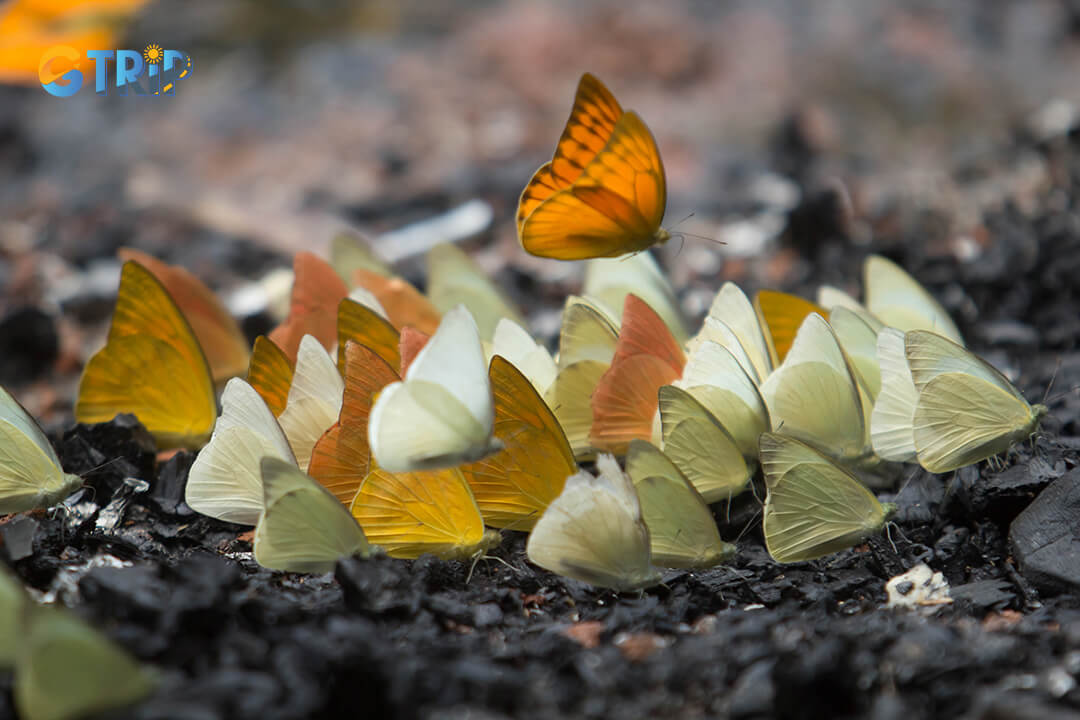
Fauna in Cuc Phuong National Park
Endangered species protection
Cuc Phuong Park plays an active role in protecting endangered species, with a strong focus on primate conservation. The park’s Endangered Primate Rescue Center (EPRC) rehabilitates and provides care for primates such as the Delacour’s Langur and other species rescued from the illegal wildlife trade. The center’s efforts focus on medical care and, where possible, reintroducing animals back into the wild.
The park also supports biodiversity research and conservation education, engaging both scientists and visitors to raise awareness about Vietnam’s unique wildlife. These conservation efforts aim to balance environmental protection with sustainable tourism initiatives.
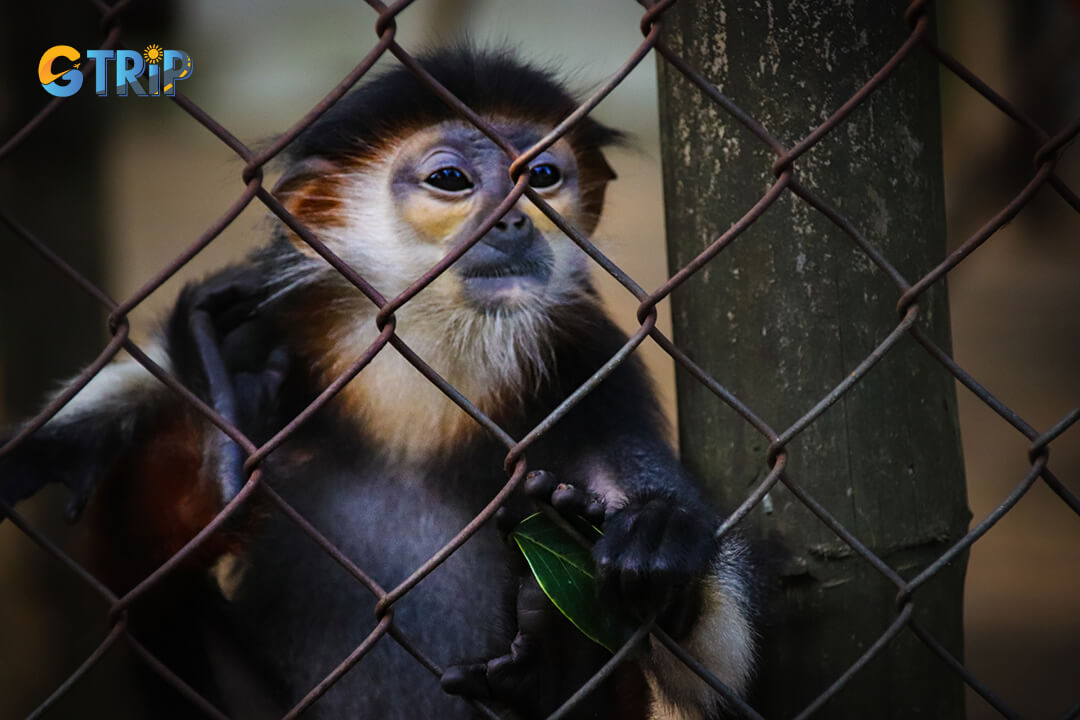
Delacour’s langur in Cuc Phuong National Park
Tourist attractions and things to do in Cuc Phuong National Park
Cuc Phuong Park offers a wide range of activities and attractions for travelers, making it a popular destination for both domestic and international tourists.
Trekking and hiking
Cuc Phuong Park offers a wealth of trekking and hiking opportunities for you to explore its diverse landscapes. The park features an extensive network of well-marked trails, ranging from easy walks through verdant forests to challenging hikes up steep, rugged terrain. Among the park’s notable routes is the Ancient Tree Trail, a scenic path that winds through forests filled with centuries-old trees. Another popular route is the Silver Cloud Peak Hike, which offers trekkers breathtaking panoramic views over the park’s limestone mountains and valleys. These treks provide an immersive experience, allowing hikers to intimately connect with Cuc Phuong’s natural wonders.
The management of Cuc Phuong National Park has created several walking trails within the forest, each with different themes and durations, allowing visitors to choose routes that best suit their interests. Some trails can be explored independently. However, it is recommended that visitors walk with a guide who can provide information and direction along the way.
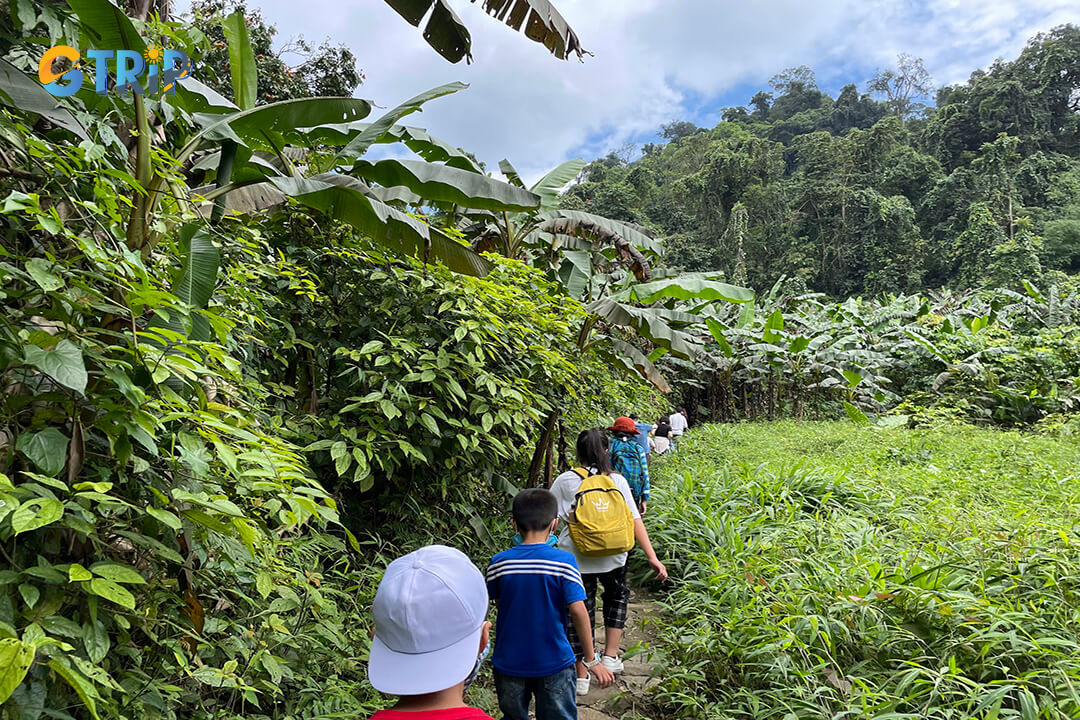
Trekking and hiking in Cuc Phuong National Park
Cave exploration
Cuc Phuong’s limestone karst landscape is dotted with numerous captivating caves, many of which are open for exploration. As a prehistoric residence and burial site, this is a valuable heritage site under the protection of the Park. The area features many beautiful caves, including Trang Khuyet, Son Cung, Pho Ma, and Thuy Tien, all sure to impress with their natural beauty.
The Con Moong Cave, whose name means “animal cave” in the local language, is located near rivers and streams in an area rich with diverse flora and fauna, making it an ideal long-term residence for ancient people. Meanwhile, Mang Chieng Cave serves as a burial site for New Stone Age inhabitants, featuring a collection of stone tools closely related to the Hoa Binh culture. The cave contains numerous artifacts, as well as animal and human remains.
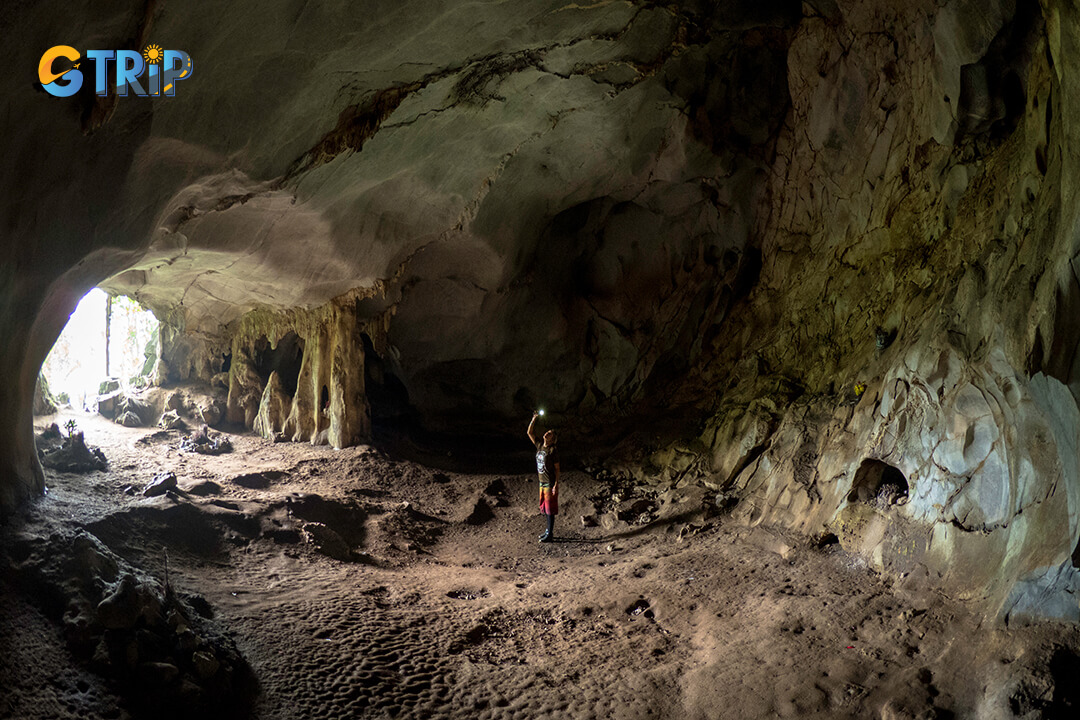
Exploring Nguoi Xua Cave in Cuc Phuong National Park
Wildlife viewing
The park is renowned for its exceptional biodiversity, making it a prime destination for wildlife enthusiasts. You can embark on guided night safaris to catch a glimpse of the park’s elusive nocturnal creatures. This night tour takes place from 7:00 PM to 10:00 PM every day of the week. It begins at the Children’s Experience and Creativity Area, from where visitors will travel by electric car with a Cuc Phuong National Park guide along forest trails on a 5-kilometer route.
Throughout this journey, guests can immerse themselves in the magical sight of millions of fireflies twinkling in the night. They will also have the chance to observe and learn about various wildlife species that are active in their natural habitat after dark, such as deer, pangolins, civets, wildcats, otters, and lorises.
In addition, the tour includes information on animal rescue, care, conservation, and re-release efforts at Cuc Phuong National Park. One highlight of the tour is the opportunity to spot insects at night, guided by experts who introduce the diverse and unique insect species that come alive in the darkness.

Wildlife viewing in Cuc Phuong National Park
Bird watching
The park is a premier destination for birdwatchers, home to over 313 recorded species. The park’s diverse habitats, from lush forests to riparian zones, host an impressive array of avian life. You can hope to spot majestic raptors like the Crested Serpent Eagle soaring overhead, as well as elusive wetland species such as the White-winged Duck.
Cuc Phuong National Park offers several well-maintained trails, beginning near the park’s headquarters, close to the main entrance. The longest route leads you to Mac Lake, a popular spot for birdwatchers seeking to observe the elusive Yellow-cheeked Tit. Two primary trails start from the Bong area in the park’s center, providing excellent opportunities to see diverse species such as the Blue-rumped Pitta, Bar-bellied Pitta, and the threatened Red-collared Woodpecker.
The valley trail is particularly rewarding, often revealing sightings of the Crested Argus and various other birds. Along these trails, you can also encounter the Red-vented Barbet and the White-bellied Woodpecker. Exploring the pristine forest along these routes can yield views of many unique bird species, making it a haven for nature enthusiasts and a perfect setting for unforgettable bird watching experiences.
If you are a lover of bird watching activities, besides Cuc Phuong, you can participate bird watching in Thung Nham (we recommend watching at 5:00 p.m in this place because this is the time when birds return to their nests).

Bird watching in Cuc Phuong National Park
Conservation education
As a leading center for biodiversity conservation in Vietnam, Cuc Phuong National Park offers you the opportunity to learn about and engage with its vital protection efforts. The park’s educational programs and guided tours provide in-depth insights into the region’s unique ecosystems, the threats facing its endangered species, and the ongoing initiatives to safeguard this natural treasure.
Travelers can participate in activities that raise awareness about the importance of preserving Cuc Phuong’s rich biodiversity, from learning about the work of the Primate Rescue Center to understanding the park’s sustainable tourism practices. By fostering a deeper appreciation for the natural world, these educational experiences empower you to become stewards of the environment, ensuring the long-term preservation of Cuc Phuong’s irreplaceable habitats and wildlife.

Conservation education of Cuc Phuong National Park
Historical and cultural significance
Cuc Phuong Park not only hosts a rich natural heritage but also a significant cultural and historical legacy.
Prehistoric human evidence
The park contains evidence of prehistoric human settlements, including tools and bones. The park contains numerous archaeological sites, including the famous “Caves of Ancient Man”, which provide evidence of human habitation dating back 7,000 to 12,000 years.
- Nguoi Xua Cave
Known as the “Cave of Ancient Man”, this cave was both a residential site and a burial ground for prehistoric people, serving as an invaluable cultural landmark within Cuc Phuong. Archaeological finds here reveal insights into early human settlements, marking it as an essential site for understanding human history in Vietnam.
From Ninh Binh City, take the Trang An – Bai Dinh – Cuc Phuong route, covering 45 km to the park entrance. After entering Cuc Phuong National Park, follow the road and walk across a 100-meter-long bridge. You will reach the base of the limestone mountains, then climb 45 meters and ascend over 200 stone and iron steps to arrive at Nguoi Xua Cave.
Nguoi Xua Cave is a 300-meter-long cave with two spacious levels, featuring a dry structure typical of limestone mountains. It has a pleasant atmosphere due to a top entrance that allows airflow. Inside, you need to bring flashlights and prepare offerings like incense and candles. The cave includes three chambers, with the outer one containing prehistoric remnants.
Excavations revealed stone tools, animal bones, and three ancient burial sites dating back about 7,500 years, reflecting early beliefs and practices. The middle chamber is home to numerous bats, while the innermost chamber features beautiful stalactites.

Nguoi Xua Cave in Cuc Phuong National Park
- Con Moong Cave
Hang Con Moong, meaning “the cave of the animal” in the local language, is located in Cuc Phuong National Park, although it belongs to Thanh Hoa Province. Discovered in November 1974 and excavated in 1976, the cave is approximately 30-40 meters long with a height of 8.41 meters.
Radiocarbon dating indicates that the cave’s layers date back 15,000 years, reflecting the continuous development of prehistoric human activity. On November 23, 2016, it was designated as a National Special Heritage Site.
Located near rivers and streams, this cave is characterized by its extensive cultural layers and complex structure. With two interconnected entrances, Con Moong Cave’s archaeological strata include deposits of clay, mollusk shells, and coal ash. The abundance of local fauna and flora made it a long-term habitation for ancient communities, adding depth to the understanding of prehistoric lifeways.

Con Muong Cave in Cuc Phuong National Park
- Mang Chieng Cave
Located in Cuc Phuong Park, Cuc Phuong commune, Nho Quan district, Ninh Binh province, Mang Chieng Cave is renowned for its stunning stalactites and stalagmites This cave is 6.2km northwest of Con Moong cave. In front of the cave there are two big Vong trees so people also call it Cay Vong cave.
A Neolithic burial site, Mang Chieng Cave holds artifacts, animal remains, and human remains. At nearby Mang Chieng Cave, scientists have gathered many animal and human skeletons. The cave has been noted as a cemetery of people in the Palaeolithic period with various stone tools of the Hoa Binh Culture.
- Crescent Moon Cave
This intriguing cave, hidden deep within the forest, is named for its crescent-shaped entrance, which gives it a mystical appearance, especially under moonlight or during dusk. The shape of the opening, combined with its secluded location, has earned it a reputation as one of the more mysterious spots within the park.
The cave, named after its crescent shape, features a complex of chambers and unique rock formations. It serves as both a natural wonder and an important archaeological site, housing evidence of prehistoric human activity. The surrounding area is rich in biodiversity, making it a popular destination for nature enthusiasts and researchers alike.

Crescent Moon Cave in Cuc Phuong National Park
- Son Cung Cave
Located along the path to the ancient bamboo grove, Son Cung Cave is a peaceful sanctuary known for its tranquil surroundings. This cave is an ideal spot for those seeking to enjoy a quiet, scenic stop along the historic route within Cuc Phuong. The serene atmosphere and nearby bamboo forest make it a perfect location to reflect on the region’s natural beauty and history.
- Pho Ma Cave
Reaching Pho Ma Cave is an adventure in itself, as you must cross Yen Quang 3 Lake and navigate through rocky valleys. Once inside, Pho Ma rewards explorers with stunning stalactites that create an otherworldly ambiance. The cave’s intricate limestone formations are beautifully illuminated by natural light streaming in through openings, highlighting details formed by centuries of mineral deposits and erosion.
- Thuy Tien Cave
Known for its legendary beauty, Thuy Tien Cave features rock formations likened to the palace of King Thuy Te, the mythical king of the underwater world. Inside, formations resemble underwater fairies, giving the cave an ethereal, almost enchanted feel. The limestone shapes and delicate formations have made Thuy Tien Cave a favorite among visitors who appreciate both natural beauty and folklore, adding a mystical experience to their park visit.
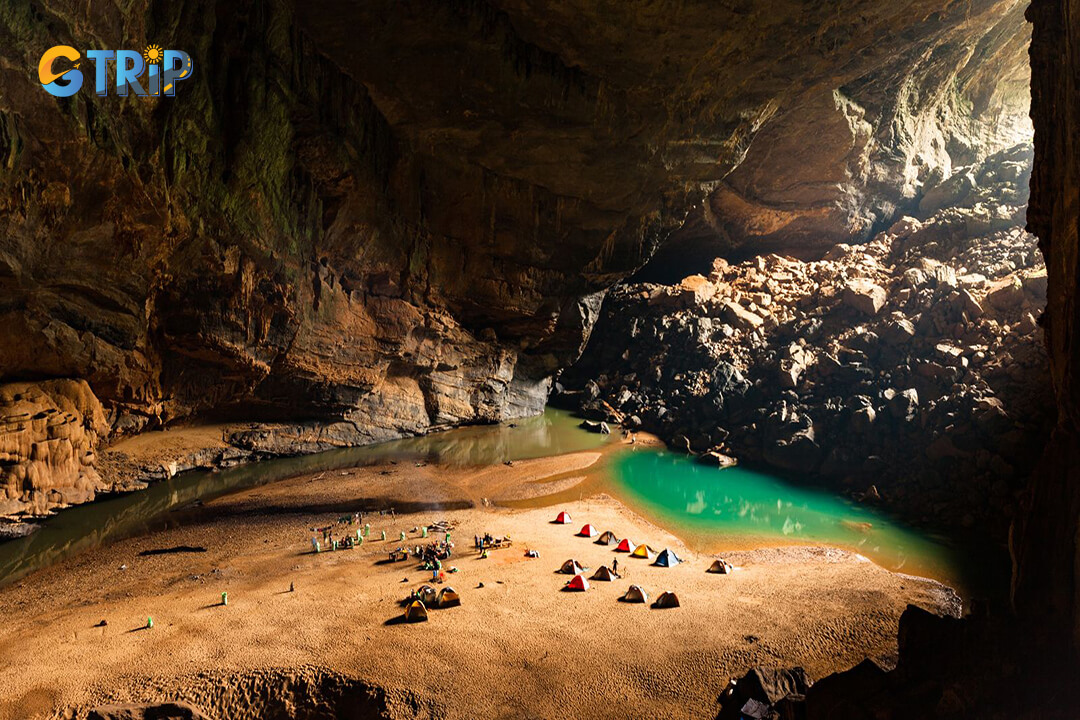
Thuy Tien Cave in Cuc Phuong National Park
Ethnic communities
The Muong people and other ethnic groups around Cuc Phuong National Park have sustained a balanced relationship with the forest for centuries. When coming to Cuc Phuong National Park, you also have the opportunity to experience the traditional cultures of ethnic minorities such as the Muong people in Khanh, Nga, and Sam villages. You can also immerse yourself in traditional dances and songs by the campfire.
Travelers can experience Muong culture through hands-on interactions and homestay programs, learning about traditional crafts, music, and agriculture. You will dance and sing with beautiful Muong girls who happily welcome tourists. Enjoy traditional ethnic dishes such as sticky rice, rice, grilled meat, and the warm aroma of traditional wine. You will surely fall in love with the people here. These exchanges offer a unique window into daily life, local ceremonies, and sustainable practices, contributing to ecotourism and promoting cultural preservation.

The Muong people and other ethnic groups around Cuc Phuong National Park
Accommodation and where to stay when visit Cuc Phuong National Park
Visitors to the park have several options for accommodation within and around the park.
Staying inside the park
At Cuc Phuong National Park, there are the following accommodation areas for tourists:
Garden Gate Area
The garden gate area is located right at the ticket gate, convenient for traveling to tourist attractions. Here, visitors can learn about accommodation services to choose a place to stay that suits their needs and budget. In addition, you can also hire a tour guide service and explore ethnic cultural programs.
Mac Lake Area
Located about 1.5km from the Garden Gate, Mac Lake Area offers a quiet, pleasant and fresh space and is known as the heart of Cuc Phuong. Here, you can easily find accommodation services such as private rooms and fully equipped communal stilt houses.
Central Area (Xom Bong)
Xom Bong is the last stop on the route through Cuc Phuong forest, about 20 km from the garden gate. This area also offers accommodation services, however, there is a notable limitation in that there is no phone or internet signal, and the power supply here is also unstable. The generator only works for about 4 hours per night and may not run if there are not enough guests.
Cuc Phuong Resort
This is an ideal resort with full amenities for tourists who want to experience the beauty of Cuc Phuong’s nature. This resort also has full amenities such as a swimming pool, bungalow rooms and a restaurant with delicious dishes.

The bungalo in Cuc Phuong Resort
Visitor center
The park’s Visitor Center serves as a hub of information, offering insight into the area’s biodiversity, history, and conservation initiatives. Cuc Phuong Visitor Center is divided into 3 areas: “Welcome”, “Forest” and “Children’s Space”. The center is built and designed according to intuitive, realistic, attractive and lively criteria, using many images, artifacts and sounds for visitors to experience, made of materials that are easy to find locally, as an invitation for visitors to explore the forest.
Here, guests can arrange guided tours to learn about the park’s ecosystems, historical relics, and endangered species protection programs. Staff at the Visitor Center are also available to help travelers plan activities based on their interests, such as bird watching, night safaris, or hikes, ensuring a rich and well-rounded experience in Cuc Phuong.

Stay in visit center of Cuc Phuong National Park
Conservation efforts and research
Cuc Phuong Park is at the forefront of conservation efforts in Vietnam, with several dedicated programs and initiatives aimed at protecting the region’s biodiversity.
Primate rescue center
The Endangered Primate Rescue Center (EPRC), founded in 1993 through a partnership between the Frankfurt Zoological Association and Vietnam’s Ministry of Forestry, is a vital part of the park’s conservation mission. The center focuses on the rehabilitation and breeding of endangered species, including various langur species, gibbons, and other primates found only in Vietnam.
EPRC also works closely with local and international organizations to care for rescued primates from illegal wildlife trade and offers a rehabilitation process for these animals, some of which are later reintroduced into the wild. The EPRC provides educational resources and outreach programs that highlight the threats faced by Vietnam’s primates and the importance of conservation.care at the Center.
Biodiversity research
Continuous research at Cuc Phuong aims to understand and preserve its rich biodiversity, involving collaborations with Vietnamese and international scientists. Researchers conduct in-depth studies on the flora and fauna in the park to create baseline data that informs the protection of endangered species and the broader ecosystem.
Current projects cover various ecological topics, including population monitoring of critical species, habitat preservation, and the study of plant and insect diversity. This data is essential for adapting conservation strategies to better manage the environmental challenges the park faces, such as climate change, habitat fragmentation, and the spread of invasive species.
Sustainable tourism initiatives
The park also emphasizes sustainable tourism to minimize human impact on its ecosystem. Local communities, particularly the Muong people, are integral to these initiatives, with the park supporting eco-tourism projects that generate income while preserving cultural heritage and natural resources.
These projects include guided tours, handicraft sales, and homestay programs that provide you with insights into local traditions while helping fund conservation efforts. Sustainable practices are integrated into these experiences to limit pollution and habitat disturbance, reinforcing Cuc Phuong’s commitment to both environmental and cultural preservation.
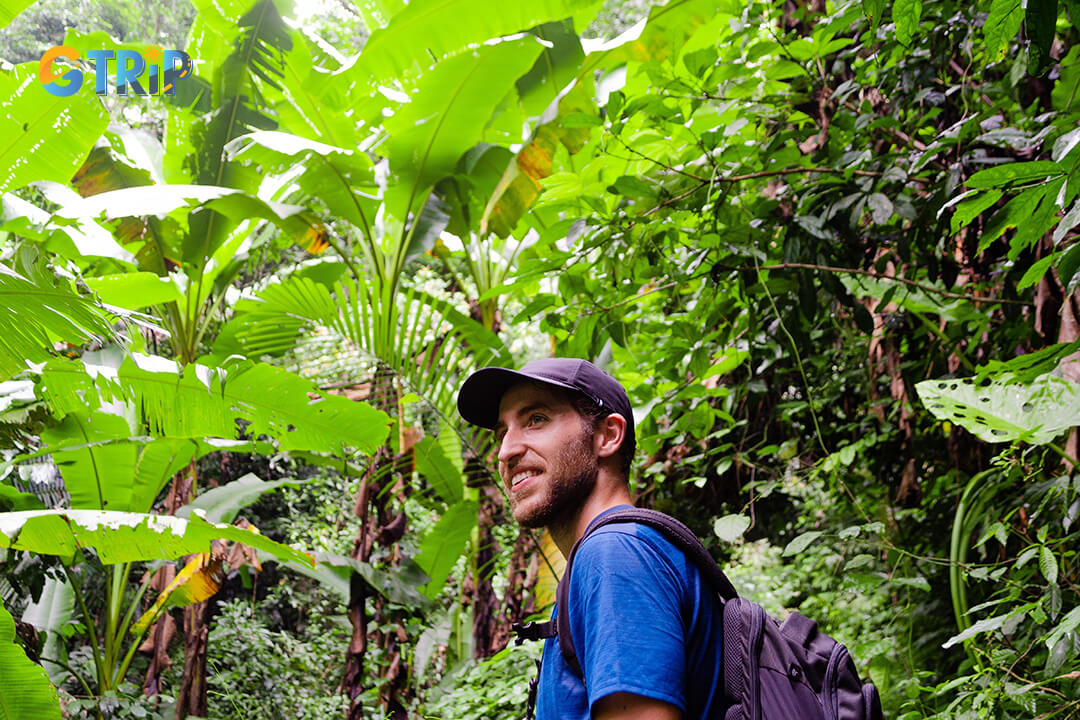
Conservation efforts and research of Cuc Phuong National Park
How to get to Cuc Phuong National Park
Cuc Phuong Park is located around 120 km southwest of Hanoi, making it accessible for both day trips and extended stays. There are several transportation options for getting to the park:
- By bus: From Hanoi, you can take a bus to Ninh Binh, the nearest major town to Cuc Phuong. There are regular buses departing from Giap Bat or My Đinh Bus Station in Hanoi. Once in Ninh Binh, you can hire a taxi or use a motorbike to reach the park, which is about 45 km from Ninh Binh town. Buses from Hanoi typically take 2 to 3 hours to reach Ninh Binh.
- By private car: Hiring a private car or taxi is a convenient option, especially for those traveling in groups. This allows for direct travel from Hanoi to the park entrance, without the need for transfers. The journey by car takes roughly 2.5 hours depending on traffic.
- By motorbike: For adventurous travelers, renting a motorbike in Hanoi or Ninh Binh is another option. This gives you the flexibility to explore the area at your own pace. However, be prepared for a 2.5 to 3-hour ride from Hanoi to Cuc Phuong, depending on road conditions and stops.
- By train: Another option is to take a train from Hanoi to Ninh Binh in about 2 hours. The train journey is scenic and comfortable, and once in Ninh Binh, you can arrange transportation to the park via taxi or motorbike.
For more information about vehicle rental units or travel and transportation companies, please read the article about moving from Hanoi to Ninh Binh.
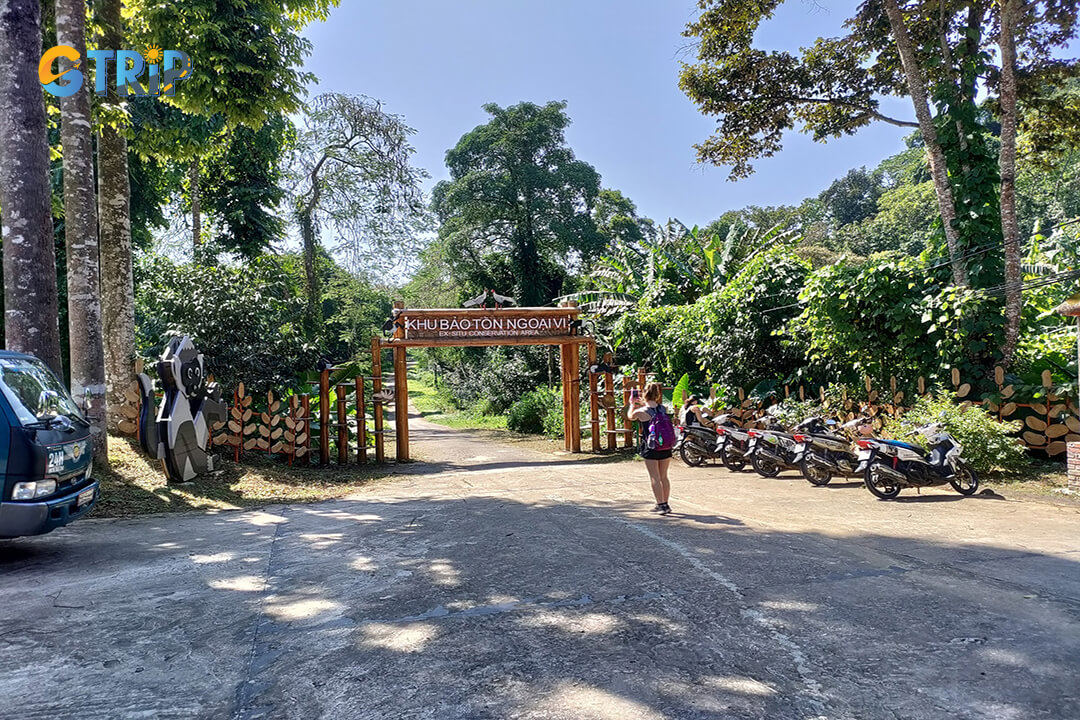
Entrance get to Cuc Phuong National Park
In addition to the above means of transportation, if you do not have experience traveling in Ninh Binh or moving here, at GTrip we have Ninh Binh tours with many activities at many tourist attractions, which can help. You fully experience the things to do and take home an unforgettable experience
Best time to visit Cuc Phuong National Park
The ideal time to visit Cuc Phuong Park is from December to May, when the weather is cooler and more favorable for outdoor activities. During these months, the temperatures of Ninh Binh are comfortable and the park’s wildlife is particularly active. This period is perfect for trekking, wildlife viewing, and exploring the caves.
- December to February: These cooler months are great for trekking through the forest without the heat of summer. This is also a good time for birdwatching, as migratory species pass through the park.
- March to May: As the park transitions to warmer weather, butterflies become one of the highlights of the season, with hundreds of species in full display. It’s a magical time for those who want to see Cuc Phuong’s rich biodiversity at its peak.
- Rainy season (June to October): While the park remains lush and green during the rainy season, heavy rainfall can make trekking and outdoor activities more challenging. The trails may be slippery, and certain areas could be inaccessible. However, if you don’t mind the rain, the park’s waterfalls and streams are particularly vibrant during this time.
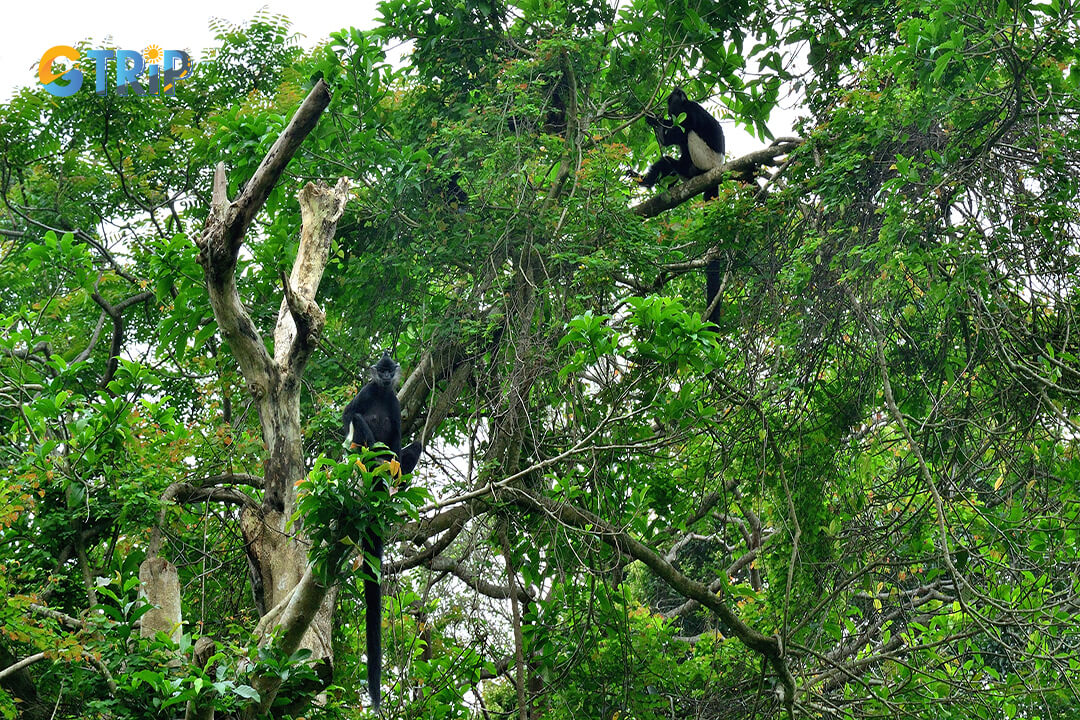
Diverse ecosystem in Cuc Phuong National Park
Environmental challenges and future goals
Like many protected areas, Cuc Phuong Park faces ongoing challenges, such as illegal logging and poaching, which threaten its biodiversity. The park’s management team, in collaboration with local and international partners, is working to combat these issues through stricter enforcement and community engagement initiatives.
Looking to the future, the park’s goals include expanding protected areas, enhancing tourism management, and continuing to safeguard the region’s unique natural and cultural heritage. As one of Vietnam’s most valuable national treasures, Cuc Phuong National Park remains a must-visit destination for those seeking to immerse themselves in the wonders of Northern Vietnam.

